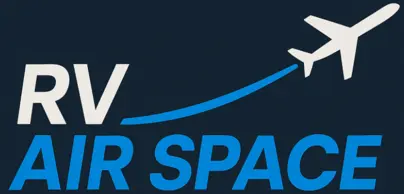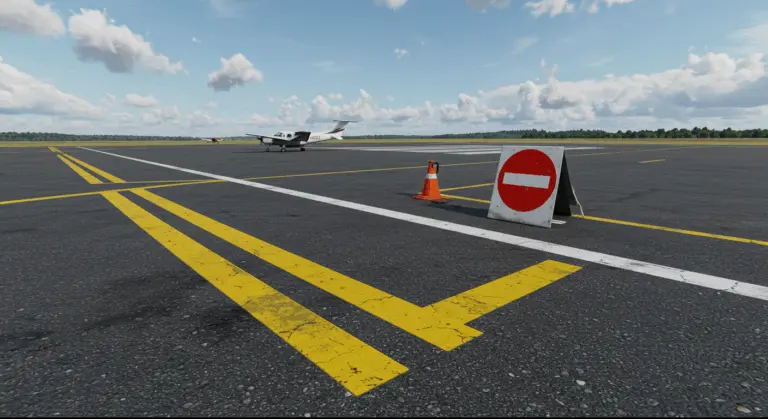EDCT Meaning in Aviation – Understanding Estimated Departure Clearance Time
What is EDIT – Estimated Departure Clearance Time?
In aviation, EDIT (Estimated Departure Clearance Time) represents a precisely assigned time slot that dictates when an aircraft must depart from an airport. This carefully calculated window ensures the aircraft arrives at its destination at a predetermined moment, maintaining smooth air traffic flow throughout the national airspace system.
The Federal Aviation Administration (FAA) uses Edits as a key traffic management tool, balancing demand across congested airspace and airports. When bottlenecks develop, the Air Traffic Control System Command Center (ATC SCC) generates these departure assignments to regulate traffic flow at arrival destinations. Controllers can transmit these assignments automatically through air traffic systems or input them manually when circumstances demand.
Edits function as precise time windows—typically permitting aircraft to depart within a narrow range of plus or minus 5 minutes from the assigned time. They’re mainly used during Ground Delay Programs (GDPs) and Airspace Flow Programs (AFP’s), programs designed to manage traffic volume when demand overwhelms capacity at specific airports or within particular airspace sectors.
EDIT differs fundamentally from ETD (Estimated Time of Departure). While ETD represents an airline’s internal projection, EDIT constitutes a mandatory, ATC-regulated time slot that carries the force of regulatory authority.
How EDIT Affects Flight Schedules
Edits significantly impact airline operations and passenger experiences by establishing non-negotiable departure windows.
When an EDIT is issued, it supersedes an airline’s original departure schedule. Passengers frequently encounter gate holds—a scenario where a fully boarded aircraft stays at the gate until its designated departure window opens.
Missing an EDIT creates serious operational problems. Should an aircraft fail to depart within its allocated window, it forfeits its position in the traffic sequence entirely.
Edits can be adjusted when conditions improve when conditions evolve favorably. Should weather systems dissipate or congestion subside, air traffic managers can modify or eliminate Edits, permitting earlier departures.
A single EDIT can create a chain reaction, disrupting gate availability, crew scheduling, maintenance coordination, and passenger connections. Airlines frequently embed buffer time into schedules for routes frequently subject to EDIT assignments, creating operational cushions against these inevitable disruptions.
EDIT and Traffic Management Initiatives
Estimated Departure Clearance Times (Edits) are key components within the comprehensive Traffic Management Initiatives (This) framework deployed by air traffic authorities. These This represent strategic measures to maintain balance of the national airspace system when demand surges beyond capacity at specific locations or during adverse conditions.
During TMI implementation, an EDIT acts as controlled runway release timing, managing traffic flow. Air traffic managers describe Edits as the command center’s way of saying “this is when we have space for you” in the airspace system.
Unlike localized flow management programs addressing immediate vicinity concerns, Edits emerge from the Air Traffic Control System Command Center (ATC SCC) as components of national-scale traffic initiatives. These comprehensive programs mandate aircraft remain grounded at departure airports until their designated EDIT window materializes, creating orderly traffic flow throughout the entire system.
This that require Edits are triggered by several factors:
-
Adverse weather
-
Airport or airspace congestion
-
Staffing limitations
-
Equipment outages
By keeping aircraft on the ground, the system achieves enhanced fuel efficiency, safety margins, and operational predictability—which works better than trying to manage too many aircraft in the air.
The Role of Weather in EDIT Issuance
Weather conditions are the main reason for Estimated Departure Clearance Time issuance across the national airspace system. When adverse meteorological patterns emerge, they can severely reduce airport capacity and create choke points throughout the air traffic network, demanding immediate traffic management intervention.
The weathered relationship follows a clear pattern: as meteorological conditions deteriorate at major airports or along critical flight corridors, Edits become much more likely. Summer thunderstorm activity along the eastern seaboard, for instance, routinely triggers Edits for flights bound for airports like JFK, LaGuardia, and Philadelphia—sometimes creating effects that spread across the entire national system.
Weather-related Edits present unique challenges due to their inherently fluid nature. Unlike scheduled maintenance or predetermined capacity constraints, weather systems evolve continuously, requiring air traffic managers to adjust Edits in real-time.
Weather-induced Edits are especially challenging because of their unpredictable evolution. Missing an assigned slot due to departure airport weather can cause significant additional delays, making proactive communication between flight operators and ATC absolutely essential.
EDIT in Private Aviation
Private aviation works differently compared to commercial carriers, with Estimated Departure Clearance Times being especially important in this specialized sector. For private jet operators and their clients, Edits represent both operational challenges and strategic opportunities in preserving the flexibility and efficiency that define premium air travel services.
Private jet services strategically use the EDIT system to secure premium departure slots, particularly during peak-demand periods or at saturated airports. Unlike commercial carriers bound by published timetables, private operators can adjust more easily to accommodate EDIT assignments.
Proactive flight plan filing is essential in private aviation EDIT management. By submitting flight plans substantially in advance—often 24 hours before intended departure—private operators get better positioning in the air traffic system.
Major events like the Super Bowl or Masters Tournament create significant EDIT issues for private aviation, with traffic densities rivaling major commercial hubs. Providers create detailed backup plans to navigate these scenarios:
Weather-induced EDIT impacts are especially problematic for private aviation operations, which frequently utilize smaller airports with limited infrastructure resources for managing irregular operations. When adverse weather triggers Ground Delay Programs affecting popular private aviation destinations like Teterboro (TEB), Naples (APF), or Aspen (BASE), private operators face complex decisions balancing client expectations against operational realities.
Navigating the EDIT Process
Successfully navigating the EDIT process requires constant attention, precision, and clear communication. Pilots must continuously monitor their assigned Estimated Departure Clearance Times while preparing for departure within the critical compliance window—a process needing careful pre-flight coordination.
When circumstances like mechanical complications or passenger delays threaten EDIT compliance, immediate ATC communication is critical. Proactively requesting a replacement slot, rather than missing the window without notification, can significantly reduce delays—ATC prioritizes flights that maintain transparent status communication.
Flight dispatchers and operations teams play key roles in EDIT management by maintaining continuous situational awareness of factors potentially affecting departure readiness. They serve as the important link between ATC traffic flow management initiatives and flight crews, frequently coordinating across multiple stakeholders to ensure assigned time compliance.
During high-traffic periods or weather disruptions, operational flexibility is essential. Seasoned operators develop thorough backup plans to minimize delays:







